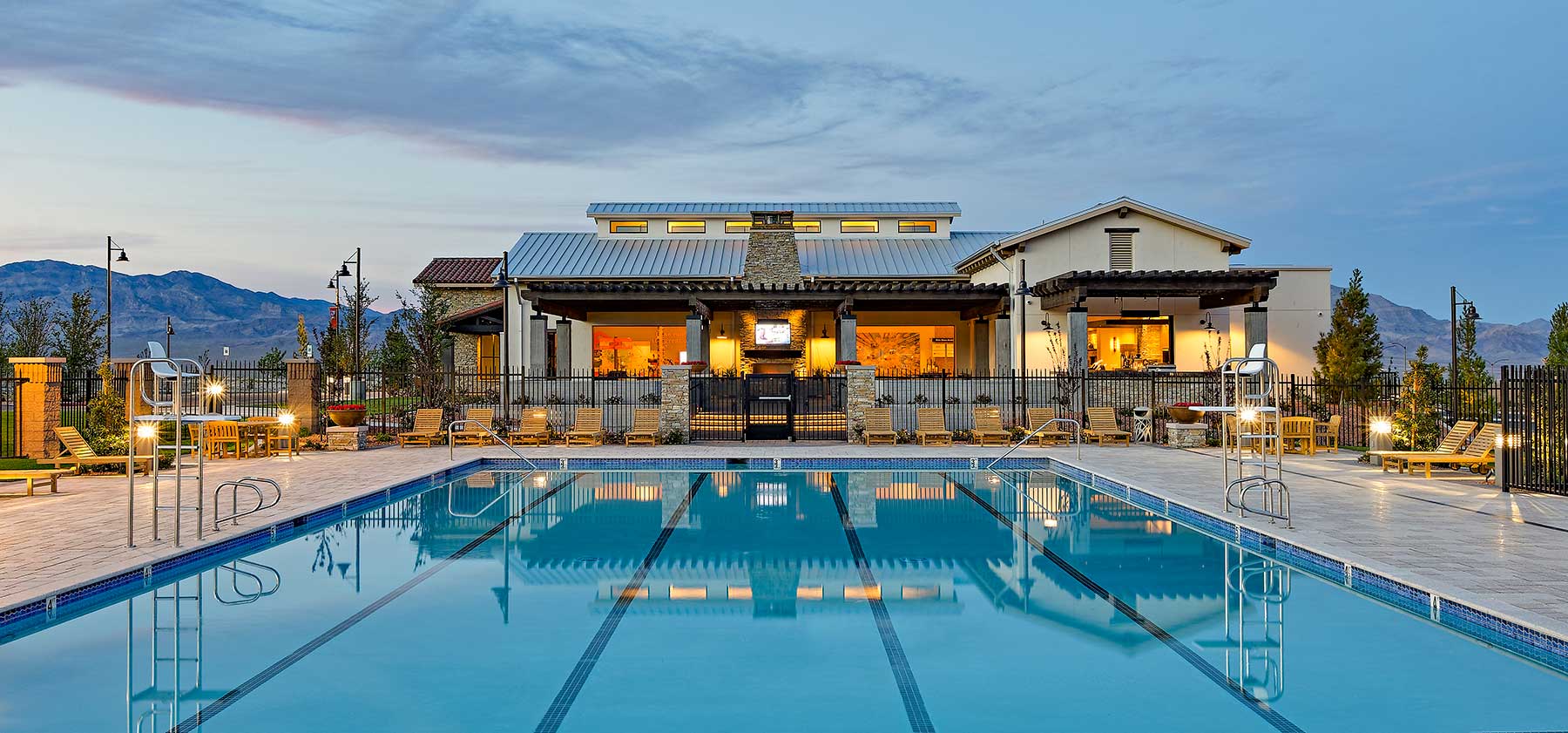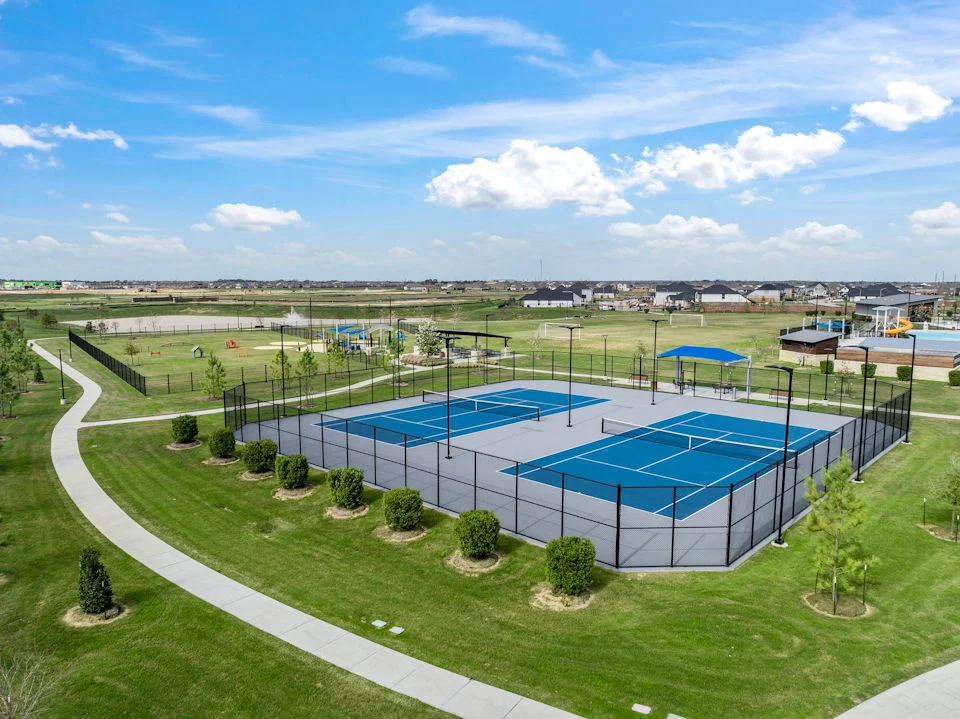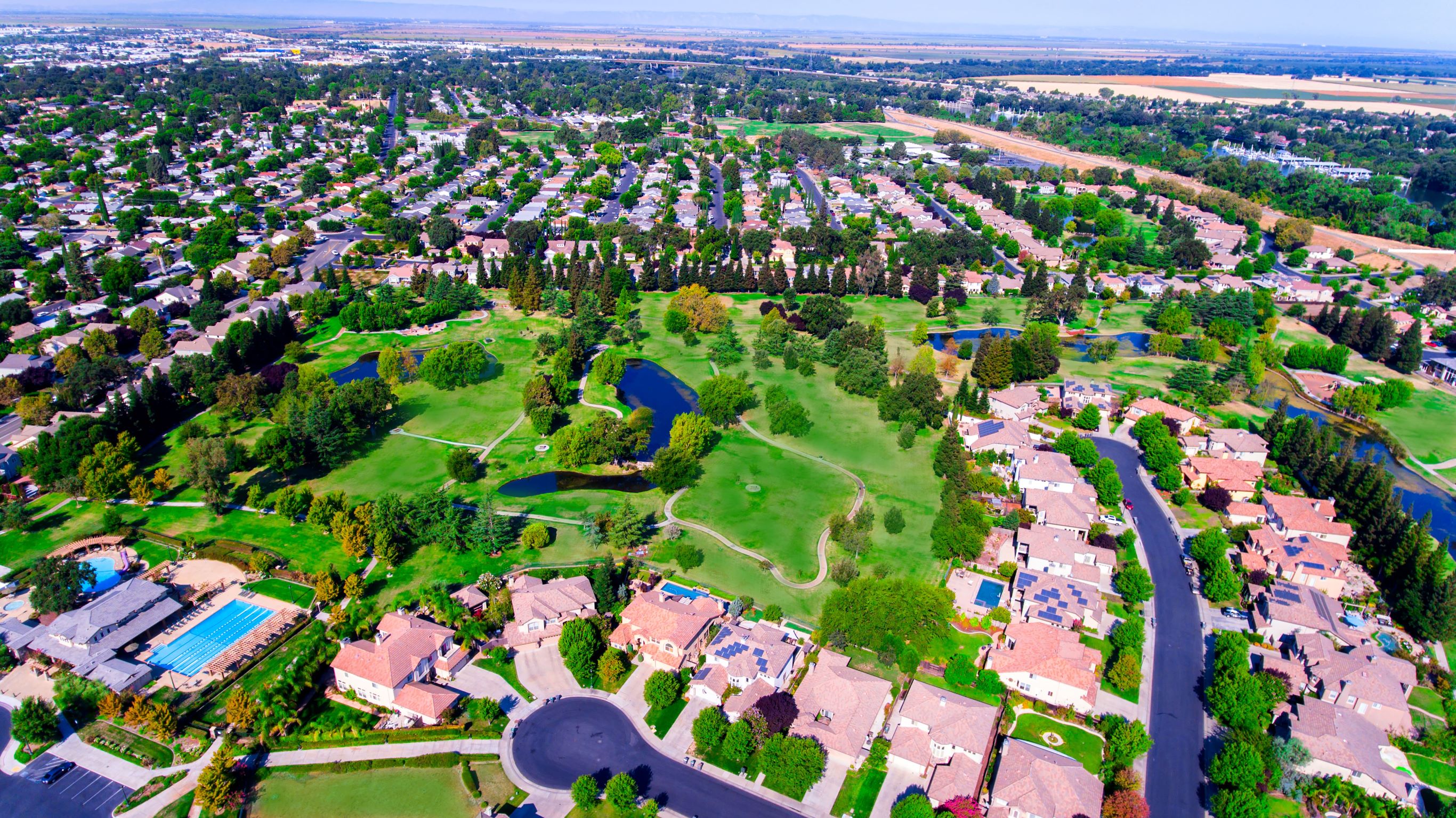Do you ever wish you could live in a self-contained community, where many of the conveniences you usually drive to are all within walking distance of your home? If so, you may want to consider living in a planned community. These types of neighborhoods are growing in popularity due to their convenience, safety features, design uniformity, community activities, investment value, and amenities. For many, planned communities offer a harmonious and enjoyable living experience.
Keep reading to discover what a planned community is, along with their benefits and challenges, so you can make an informed decision on whether or not a planned community is for you!
What Is a Planned Community?
Planned communities are large residential or mixed-use developments where everything from the roads to the homes are meticulously designed to make living there easy and enjoyable. Many planned communities are self-contained, featuring their own amenities and even commercial businesses. Smaller planned communities can contain parks, pools, and playgrounds, while larger ones can have everything from stores and restaurants to golf courses and schools.
The History of Planned Communities
The history of planned communities1 dates back much later than you might think—to the 4th century BC—when the first planned community was built in Miletus, Greece. In 19th century England, the Garden City Movement grew out of a concern about crowding and pollution that came with the Industrial Revolution. These communities were limited in size and density and surrounded by undeveloped land.
Eventually, planned communities made their way to the U.S. However, there is some debate about which community was the first planned community. Many claim that St. Augustine2, built by the Spanish in 1565, was the first, while others view the creation of Riverside, a Chicago suburb created in 1869, as the beginning of the planned community revolution in the United States. Later in the 1980s, the New Urbanism movement focused on walkable communities that combined residential and commercial space. Today's planned communities continue this long tradition of safe, convenient, self-contained neighborhoods with modern amenities.
The Benefits of Planned Communities
There are many benefits of new home communities, including things like enhanced security features and access to amenities like parks, to name a couple. Explore all the benefits of a planned community below:
- Community Amenities: Many planned communities have a pool, fitness center, hiking trails, neighborhood schools, nearby shopping, dining, and entertainment, but they may also feature event spaces and even farm plots.
- Natural Landscapes/Green Spaces: Some new home communities are built on 100 or more acres of open space, with a focus on the surrounding landscape.
- Community Engagement: From special annual events to clubhouses or private meeting rooms, planned communities are structured so that you can get to know your neighbor beyond a simple smile and wave.
- Less Traffic: Generally, the number of homes is limited, and many planned communities are gated, leading to less traffic.
- Flexibility in Home Choices: There are many choices in home styles, floor plans, and features, from single-story and two-story homes to open-concept contemporary layouts.
- Safety and Security: Many planned communities are gated, but they may also be regularly patrolled by their own security, often making them some of the safest neighborhoods.
Challenges of Planned Communities
While life in a planned community may seem idyllic (and it can be!), there are a few things you should know about them. This includes:
- Special Districts: Special districts are responsible for financing the upkeep and improvement of various aspects of the community, such as common areas, roads, sewers, and even facilities like schools and fire stations. This can cost homeowners additional taxes or fees that can tack on hundreds, if not thousands of dollars per year.
Responsibilities of special districts can vary by state, municipality and community, and they can go by different names, such as Community Development Districts (CDD), Special Improvement Districts (SID), Local Improvement Districts (LID), and Community Facilities District (CFD). - Homeowners Associations (HOA): This group upholds community rules and regulations, keeping individual properties and the community well-maintained—including any amenities like pools and parks. They may enforce strict rules around what homeowners can have in their yard or on their house, or what types of changes they can make to the appearance of their home. You will also have to pay extra fees to fund the HOA, generally known as dues.
Keep in mind that not all planned communities have a special district or HOA, but most have at least one or the other.
Examples of Planned Communities
Want to explore a planned community? Check out some of our own communities to get an idea of what living in one of these neighborhoods could be like.
Skye Canyon (Las Vegas, NV)

The Skye Canyon community in the Las Vegas metro area features resort-style amenities, such as community parks, a fitness center, trails and open space, sports fields, year-round events, and neighborhood schools. For many, this community is the epitome of planned living.
Sunterra (Katy, TX)

Sunterra in Katy, Texas, features exciting planned amenities include a lazy river, a lagoon, a pool, parks, playgrounds, trails, lakes, and more. Conveniently located 30 miles from Houston and 24 miles from Sugar Land, Sunterra is ideally positioned for quick commutes via I-10, Highway 290, Highway 90, and Grand Parkway.
Cadence (Henderson, NV)

The Cadence planned community in Henderson, Nevada, is conveniently situated southeast of Las Vegas near I-11 and I-215. It boasts a desirable location with a short drive to economic and entertainment hubs. Residents love Henderson because it offers an abundance of local activities, such as premier shopping, world-class dining, numerous golf courses, 180 miles of trails, community events, a thriving arts scene and much more.
The Rivers (West Sacramento, CA)

Located on the west bank of the Sacramento River, The Rivers is close to downtown Sacramento and its many amenities and attractions. Here, homeowners enjoy contemporary home designs, pools, walking paths, a clubhouse, and more.
Overland Grove (Forney, TX)

In addition to convenient access to historic downtown Forney, Overland Grove offers an easy commute to Dallas. Beyond its single- and two-story homes, residents enjoy resort-style amenities like a pool, parks, community gardens, and more.
Always Research Planned Communities Before Finalizing Your Home Purchase
If you are interested in living in a planned community, it’s important to research your options before making a decision. Despite the name, not all planned communities offer the same amenities and lifestyle. Thus, you must choose a community that matches your needs. We recommend meeting with the homebuilder or even touring the planned community first to see if it’s right for you.
At Century Communities, we are dedicated to offering a variety of new construction homes in our planned communities. Whether you need easy access to a certain city or prefer a quieter atmosphere, we have communities all over the US to fit your needs. Explore our range of planned communities and find your perfect home. Start your home search today!
